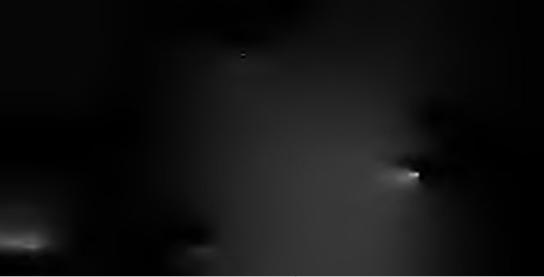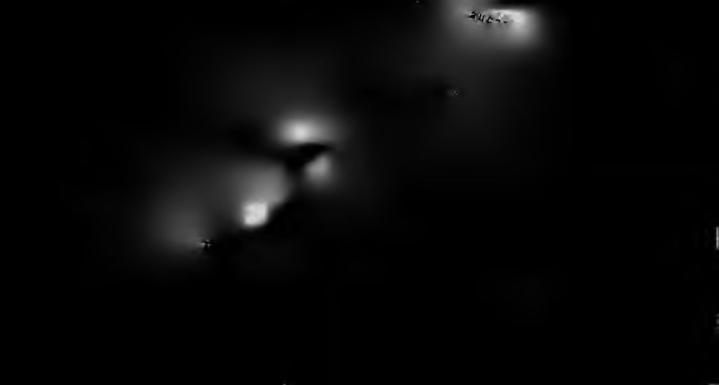
- •Preface
- •Acknowledgments
- •1 Introduction
- •The land and its water
- •Climate and vegetation
- •Lower Palaeolithic (ca. 1,000,000–250,000 BC)
- •Middle Palaeolithic (ca. 250,000–45,000 BC)
- •Upper Palaeolithic and Epipalaeolithic (ca. 45,000–9600 BC)
- •Rock art and ritual
- •The Neolithic: A synergy of plants, animals, and people
- •New perspectives on the Neolithic from Turkey
- •Beginnings of sedentary life
- •Southeastern Anatolia
- •North of the Taurus Mountains
- •Ritual, art, and temples
- •Southeastern Anatolia
- •Central Anatolia
- •Contact and exchange: The obsidian trade
- •Stoneworking technologies and crafts
- •Concluding remarks
- •Pottery Neolithic (ca. 7000–6000 BC)
- •Houses and ritual
- •Southeastern Anatolia and Cilicia
- •Central Anatolia
- •Western Anatolia and the Aegean coast
- •Northwest Anatolia
- •Seeing red
- •Invention of pottery
- •Cilicia and the southeast
- •Western Anatolia
- •Northwest Anatolia
- •Other crafts and technology
- •Economy
- •Concluding remarks on the Ceramic Neolithic
- •Spread of farming into Europe
- •Early and Middle Chalcolithic (ca. 6000–4000 BC)
- •Regional variations
- •Eastern Anatolia
- •The central plateau
- •Western Anatolia
- •Northwest Anatolia
- •Metallurgy
- •Late Chalcolithic (ca. 4000–3100 BC)
- •Euphrates area and southeastern Anatolia
- •Late Chalcolithic 1 and 2 (LC 1–2): 4300–3650 BC
- •Late Chalcolithic 3 (LC 3): 3650–3450 BC
- •Late Chalcolithic 4 (LC 4): 3450–3250 BC
- •Late Chalcolithic 5 (LC 5): 3250–3000/2950 BC
- •Eastern Highlands
- •Western Anatolia
- •Northwestern Anatolia and the Pontic Zone
- •Central Anatolia
- •Early Bronze Age (ca. 3100–2000 BC)
- •Cities, centers, and villages
- •Regional survey
- •Southeast Anatolia
- •East-central Anatolia (Turkish Upper Euphrates)
- •Eastern Anatolia
- •Western Anatolia
- •Central Anatolia
- •Cilicia
- •Metallurgy and its impact
- •Wool, milk, traction, and mobility: Secondary products revolution
- •Burial customs
- •The Karum Kanesh and the Assyrian trading network
- •Middle Bronze Age city-states of the Anatolian plateau
- •Central Anatolian material culture of the Middle Bronze Age
- •Indo-Europeans in Anatolia and the origins of the Hittites
- •Middle Bronze Age Anatolia beyond the horizons of literacy
- •The end of the trading colony period
- •The rediscovery of the Hittites
- •Historical outline
- •The imperial capital
- •Hittite sites in the empire’s heartland
- •Hittite architectural sculpture and rock reliefs
- •Hittite glyptic and minor arts
- •The concept of an Iron Age
- •Assyria and the history of the Neo-Hittite principalities
- •Key Neo-Hittite sites
- •Carchemish
- •Zincirli
- •Karatepe
- •Land of Tabal
- •Early Urartu, Nairi, and Biainili
- •Historical developments in imperial Biainili, the Kingdom of Van
- •Fortresses, settlements, and architectural practices
- •Smaller artefacts and decorative arts
- •Bronzes
- •Stone reliefs
- •Seals and seal impressions
- •Urartian religion and cultic activities
- •Demise
- •The Trojan War as prelude
- •The Aegean coast
- •The Phrygians
- •The Lydians
- •The Achaemenid conquest and its antecedents
- •Bibliography
- •Index
1
INTRODUCTION
Nature has been generous with Turkey, endowing it with gifts of land, minerals, plants, and animals. Geographically, Turkey straddles two continents, linking mainland Europe with Asia across the narrow straits of the Bosphorus and the Dardanelles. These, along with the Sea of Marmara in between, form the only sea passage from the Black Sea to the Aegean. European Turkey (Thrace), to the north of the Sea of Marmara, shares borders with Bulgaria and Greece. Asian Turkey, much of which is known locally as Anatolia (or Anadolu), is very much bigger in area and borders Syria and Iraq to the south and southeast, Iran and Armenia to the east, and Georgia to the northeast. The Black Sea, the Aegean, and the Mediterranean all wash the long coastlines. The name Anatolia is a relatively modern term first used in the 10th century AD. Before then the country had been loosely referred to by classical writers as “Asia,” or as “Asia Minor” to distinguish it from the continent of that name.1 In pre-classical times it had no name at all, since it had never been sufficiently united politically for its frontiers to be defined.
The landscape of Turkey is extraordinarily complex and dominated by mountains, part of a broad belt of ranges extending westward from Iran into the heart of Europe. An east–west peninsula, stretching from Trans-Caucasus to the southeast extremity of Europe, Turkey’s shape and alignment has promoted the notion of a bridge-land, an overused metaphor that probably goes back to time when Asia Minor was perceived as the land between Classical Greece and Achaemenid Persia.2 While it is true that this geographical circumstance allowed Turkey to function as a land link between two continents, we should not categorize Turkey simply as a corridor. Indeed, even a casual glance at Turkey’s cultural achievements will reveal that it was also responsible for nurturing a kaleidoscope of innovative ancient societies. In studying the human occupation of this formidable mountainous terrain, we have constantly to be aware of its intricate and broken nature that separates into seven broad geographical regions (Figure 1.1).
1

I N T R O D U C T I O N
Figure 1.1 Map of Turkey showing the main geographical regions: 1 Marmara. 2 Mediterranean. 3 West central. 4 Central. 5 Black Sea; 6 Eastern. 7 Southeastern
For ancient Turkey cultural patterns are better understood if they are seen as mutually interacting with physical features and related bioclimatic elements.
THE LAND AND ITS WATER
Turkey’s structural evolution has been shaped by tectonic plate shifts, significant seismic activity and the effect of volcanism since the mid-Tertiary. Frequent and major earthquakes, together with volcanic phenomena, are signs that these powerful earth forces are still active today.3 Anatolia and Iran are the two halves of the Mobile Belt Province that has been literally squeezed by the African and Eurasian tectonic plates (Figure 1.2). This massive tectonism created the Pontic Mountains, a virtually continuous belt of folded ranges across northern Anatolia, and the Taurus and Anti-Taurus Mountains, a similar belt across the south, rimming either side of an ancient platform. In the west, rift valleys (grabens) and raised blocks (horsts) create the irregular coastline of the Aegean. On the other side of the peninsula, the tangled highland topography of eastern Anatolia merges into the Caucasus and into the Zagros, creating some of the most rugged topography in the Middle East. In easternmost Turkey, this complex culminates in the massive cone of Mount Ararat (Ag˘ rı Dag˘ ı), towering 5145 m above the Armenian borderlands. To its southwest is Lake Van, which fills a great basin 128 km long.
A basic understanding of plate movements and faulting proves useful in appreciating some of the background elements of the Anatolian landscape that we will visit throughout this book.
2

I N T R O D U C T I O N
Figure 1.2 The complex system of tectonic plates in the Middle East. Note the convergence of tectonic zones in eastern Turkey (adapted from Held 1994: map 3–2)
Volcanism, for instance, brings with it mineralization along the various plate contacts, which has furnished Turkey with more nonfuel mineral wealth than any other region in the Middle East. Most (although not all) metallic ores occur in mineralized rocks, and Turkey has extensive deposits of copper, iron, lead, silver, and gold among others. Obsidian (volcanic glass), so prized in early prehistory, and amply attested in the eastern and central regions of Turkey, was also formed as part of this process. Emphasizing Anatolia’s mountainous character should also remind us that it is a well-watered land. Long winters cover these mountains with heavy snowfalls that turn the ranges into a source of water, with melting snows and spring rains supplying the headwaters of the major rivers of the Middle East—the Euphrates (Turkish, Fırat) and Tigris (Turkish, Dilce), and the Kura and the Araxes (Turkish, Aras), to mention but a few. Finally, we should note that the east–west fracture lines have determined the main avenues of communication, such as the Kelkit–Çoruh trough and the longitudinal Erzurum plain, which track the path of the notorious North Anatolian Fault that runs south of the Pontic. There is, of course, extensive crossfaulting that has created important north–south passes, but on the whole the topography of Turkey is conducive to an east–west flow. With this we should delve a little further into the physical structure of the various regions (Figure 1.3).4
3

Figure 1.3 Map of Turkey showing its physical topography
